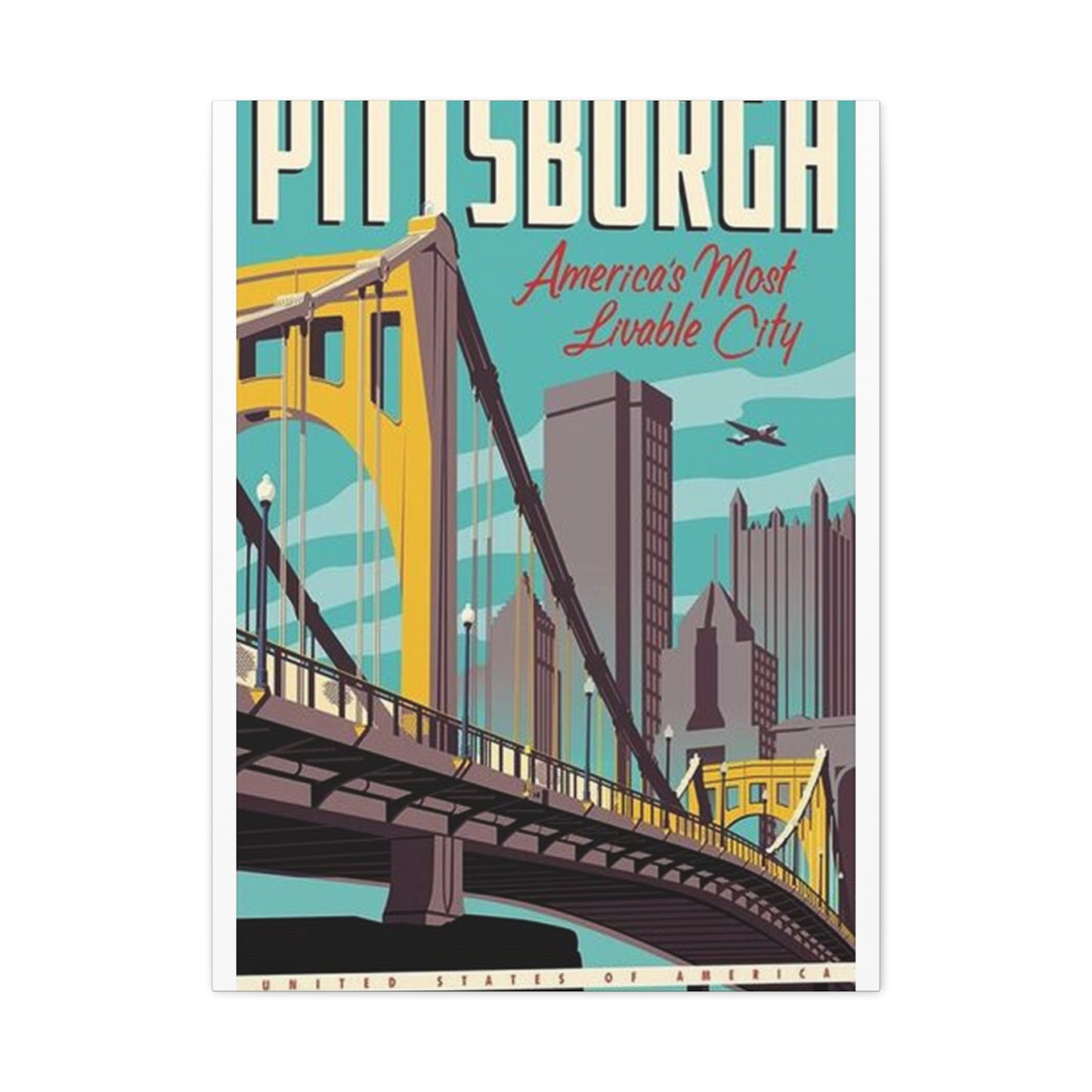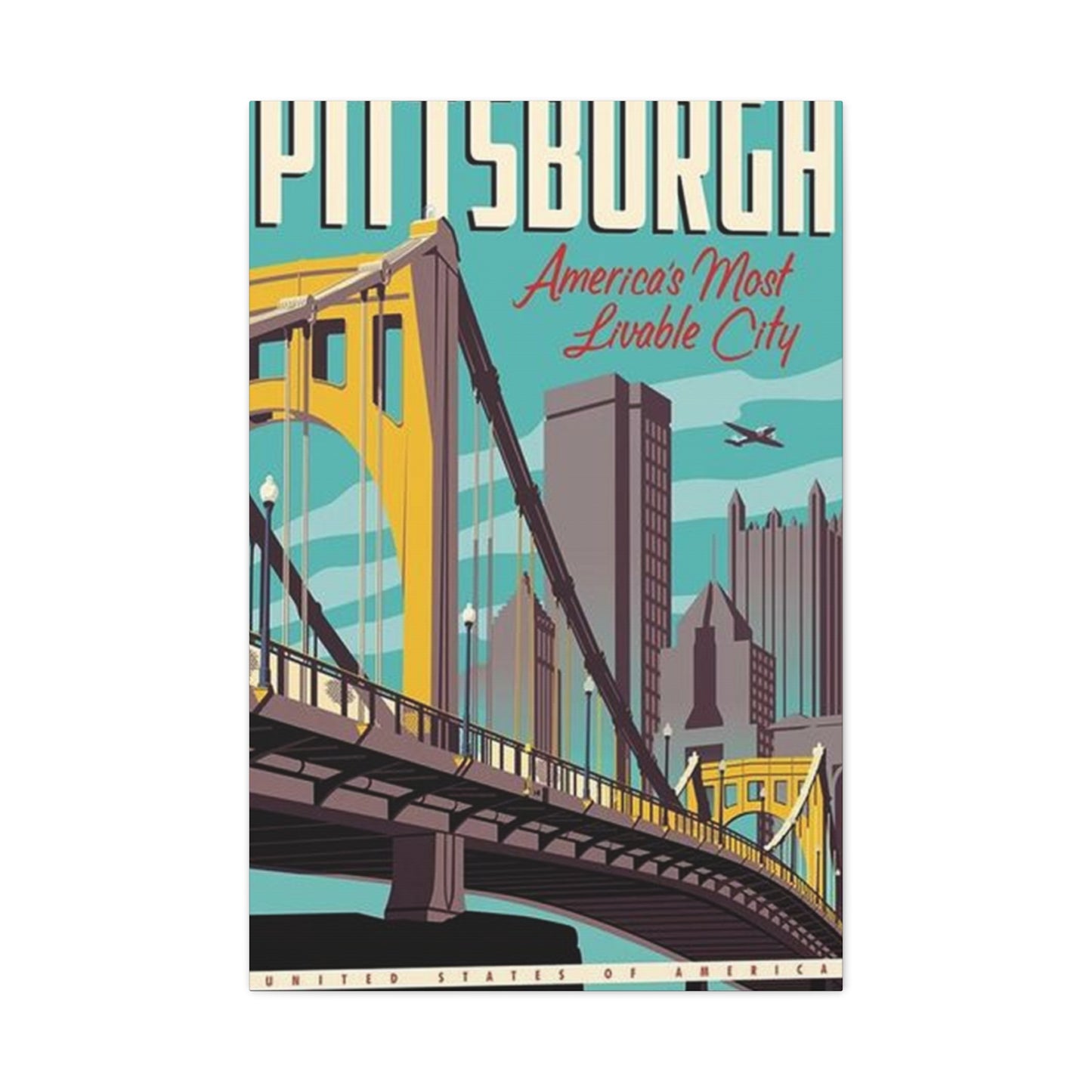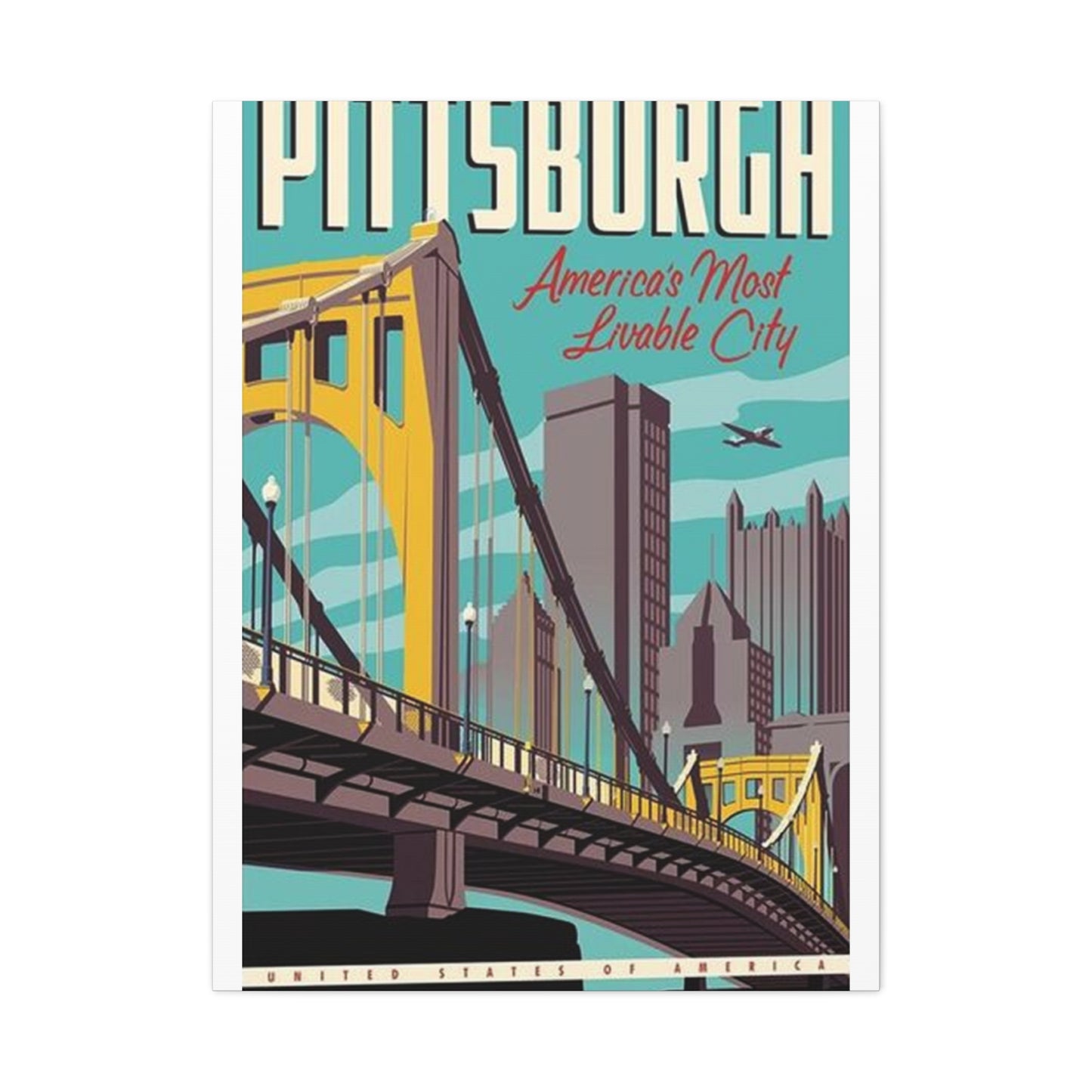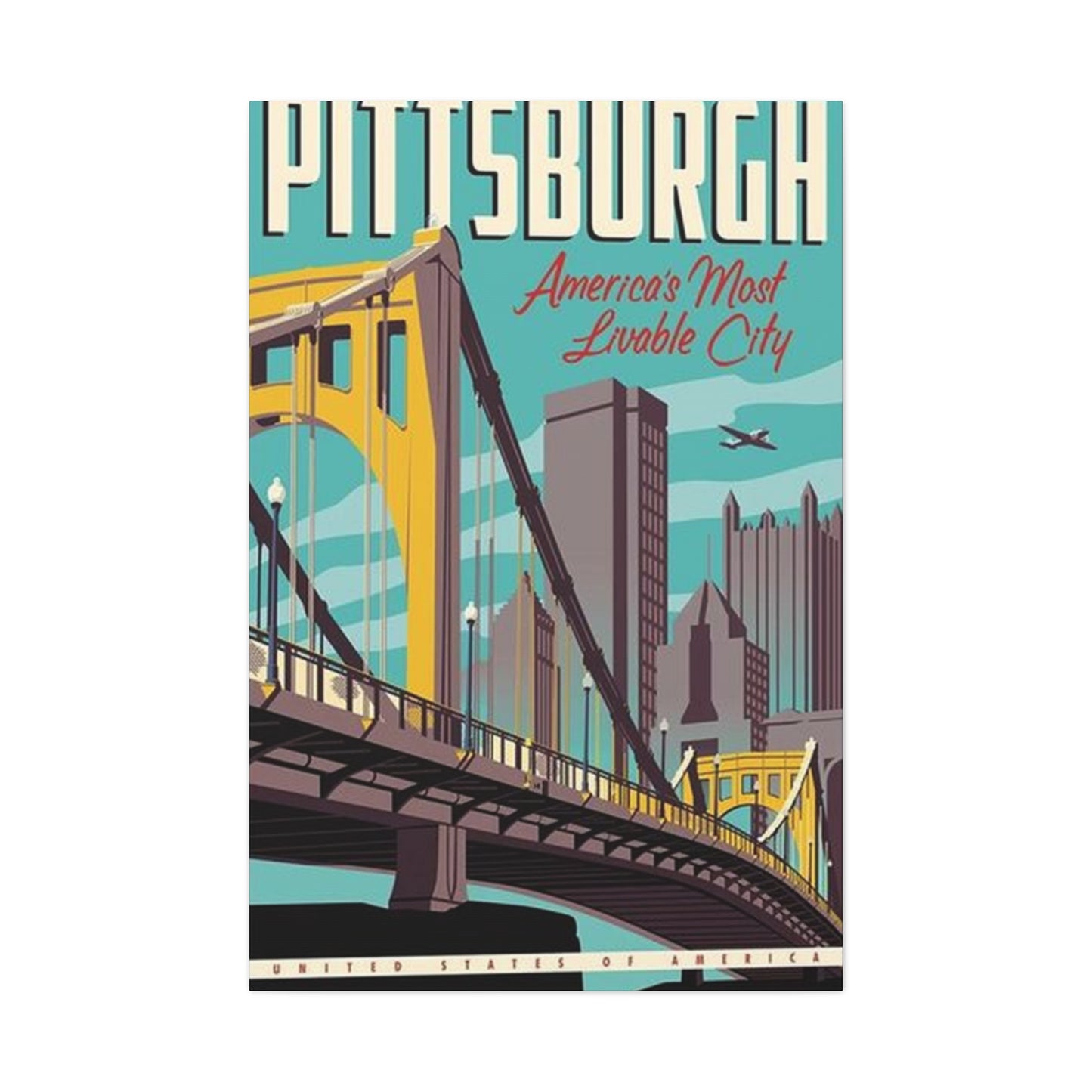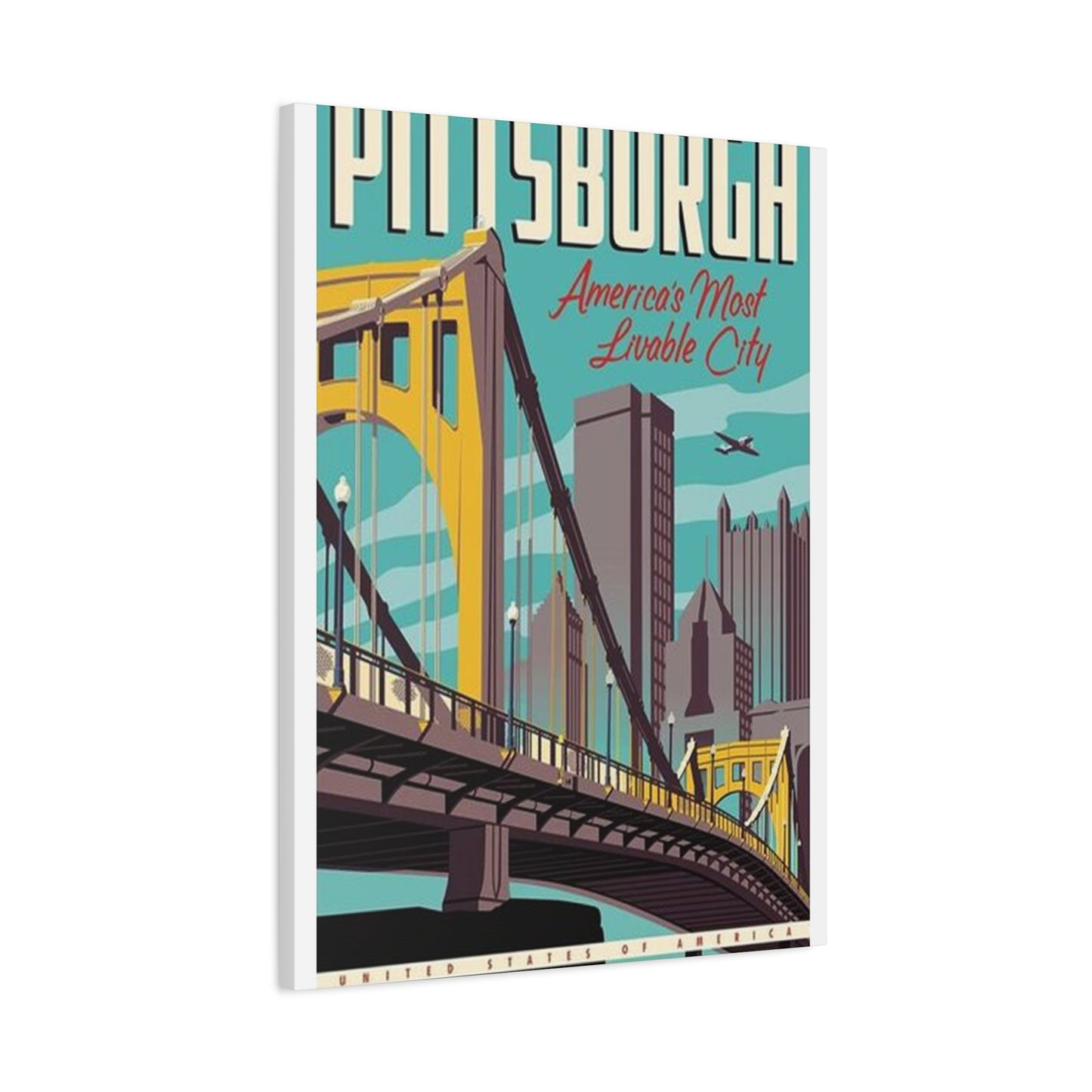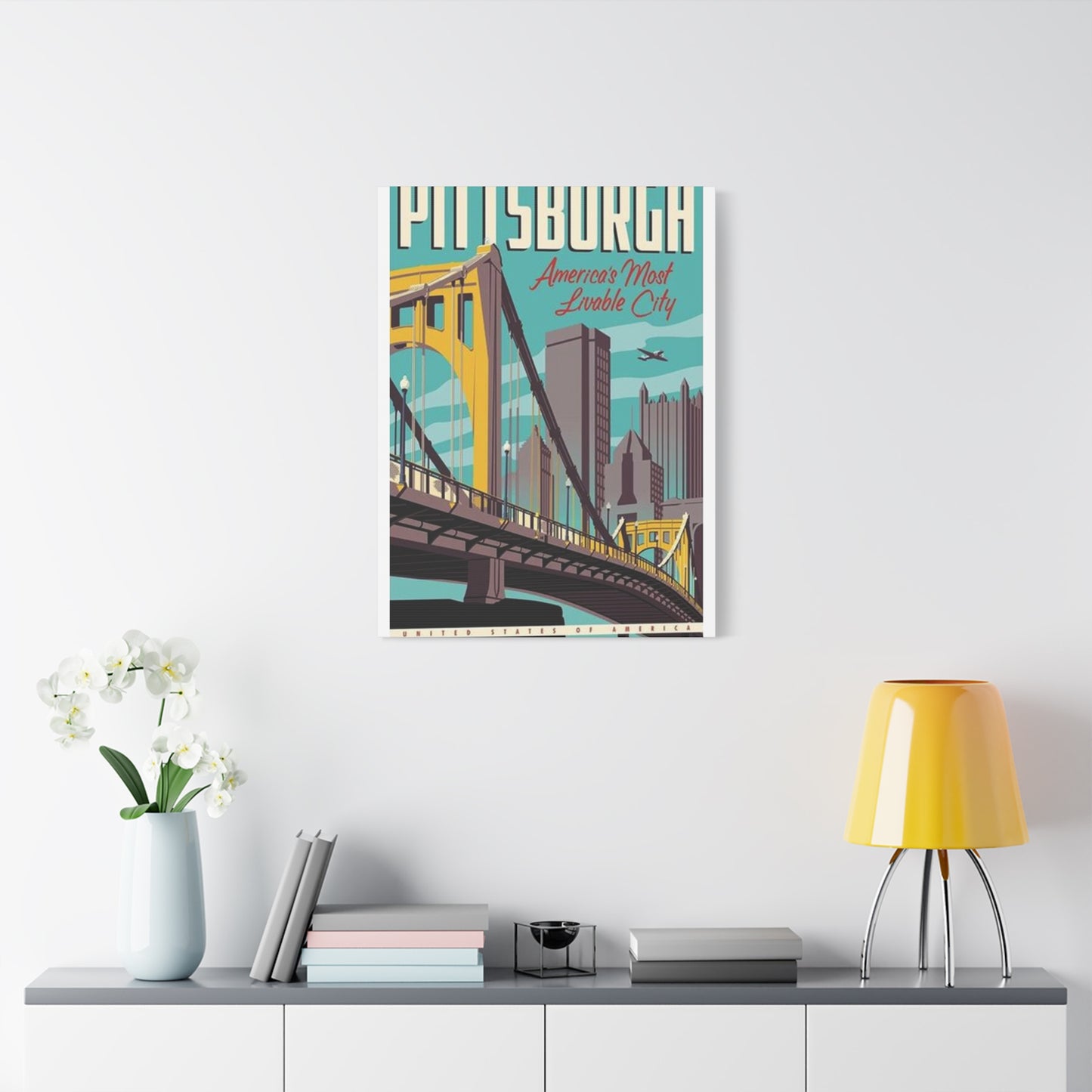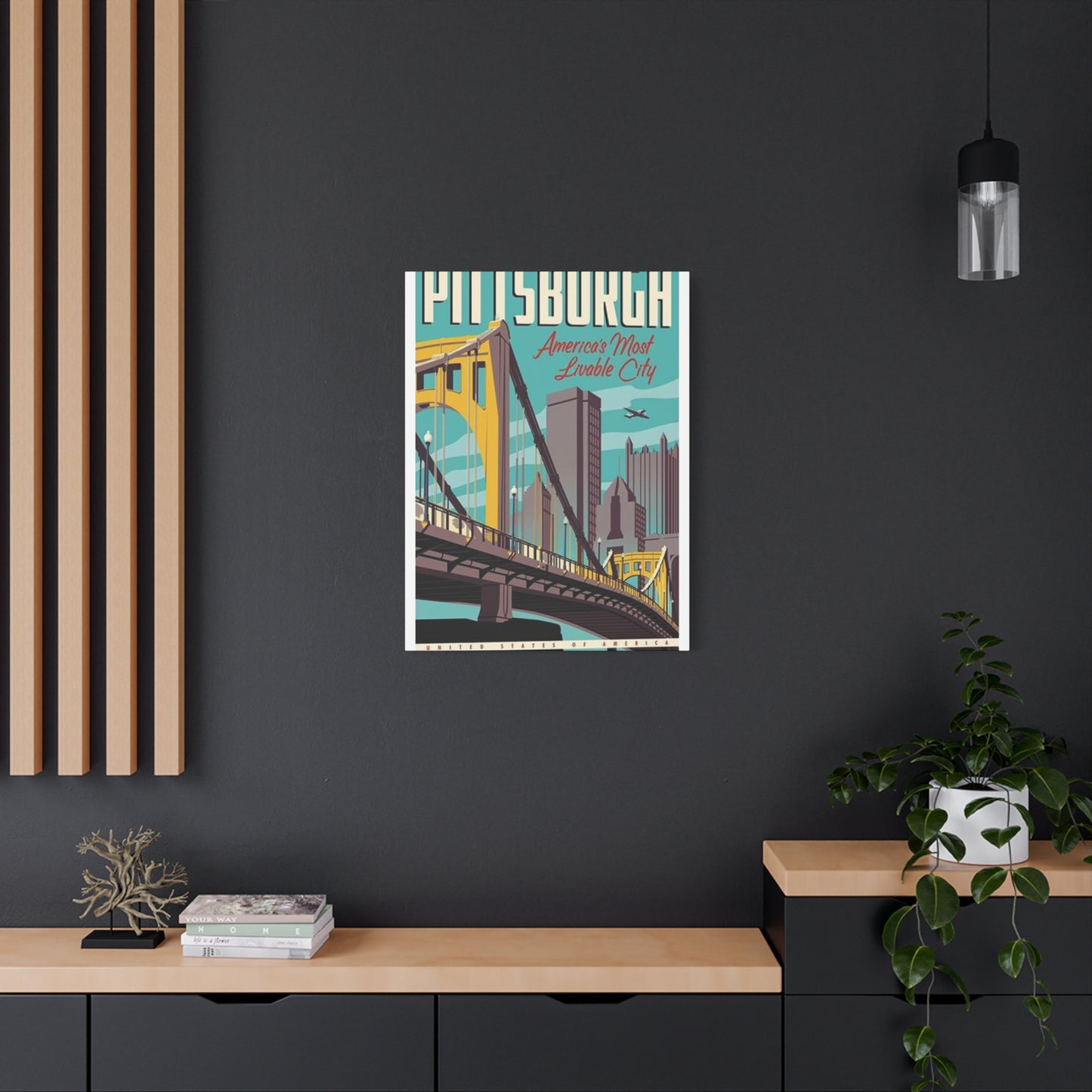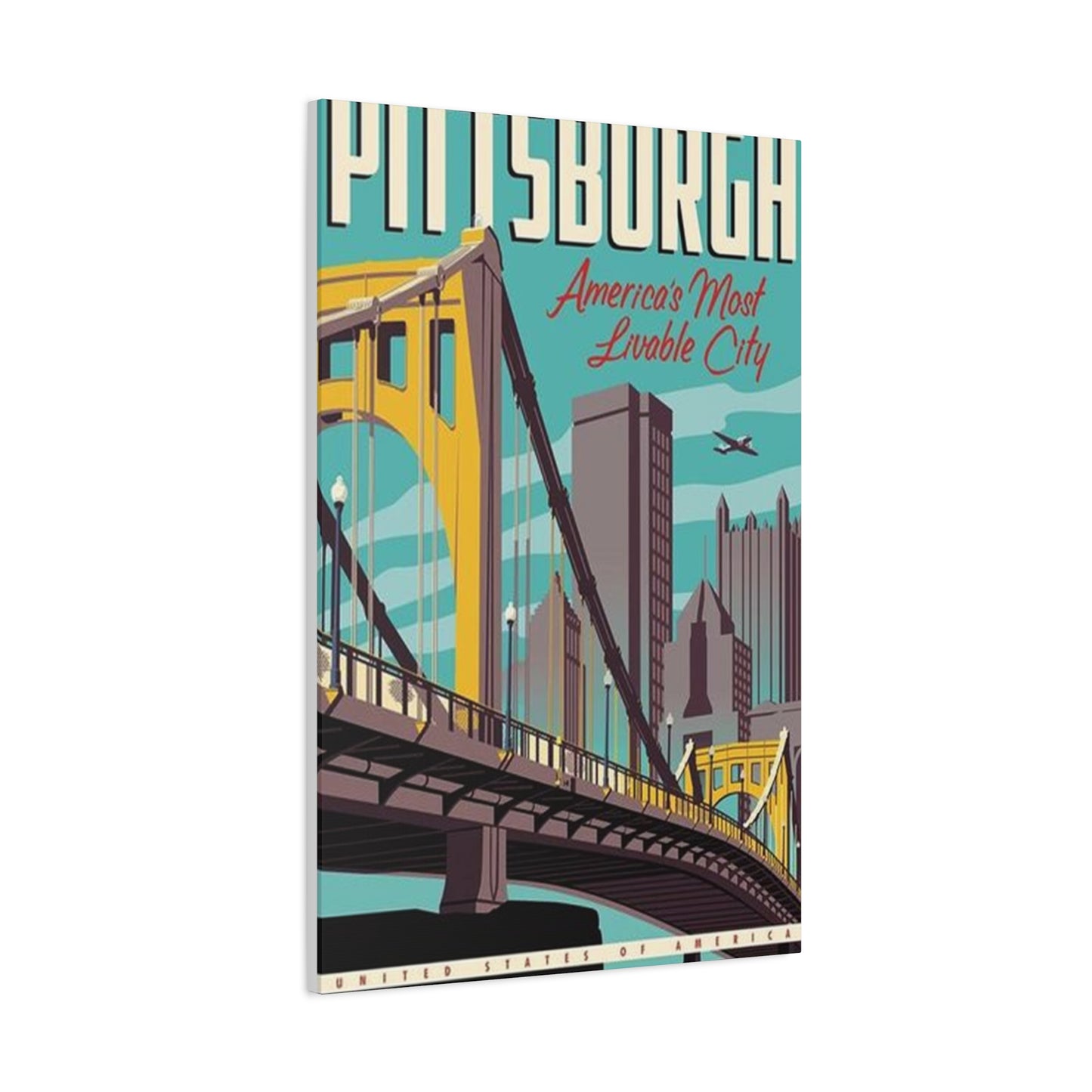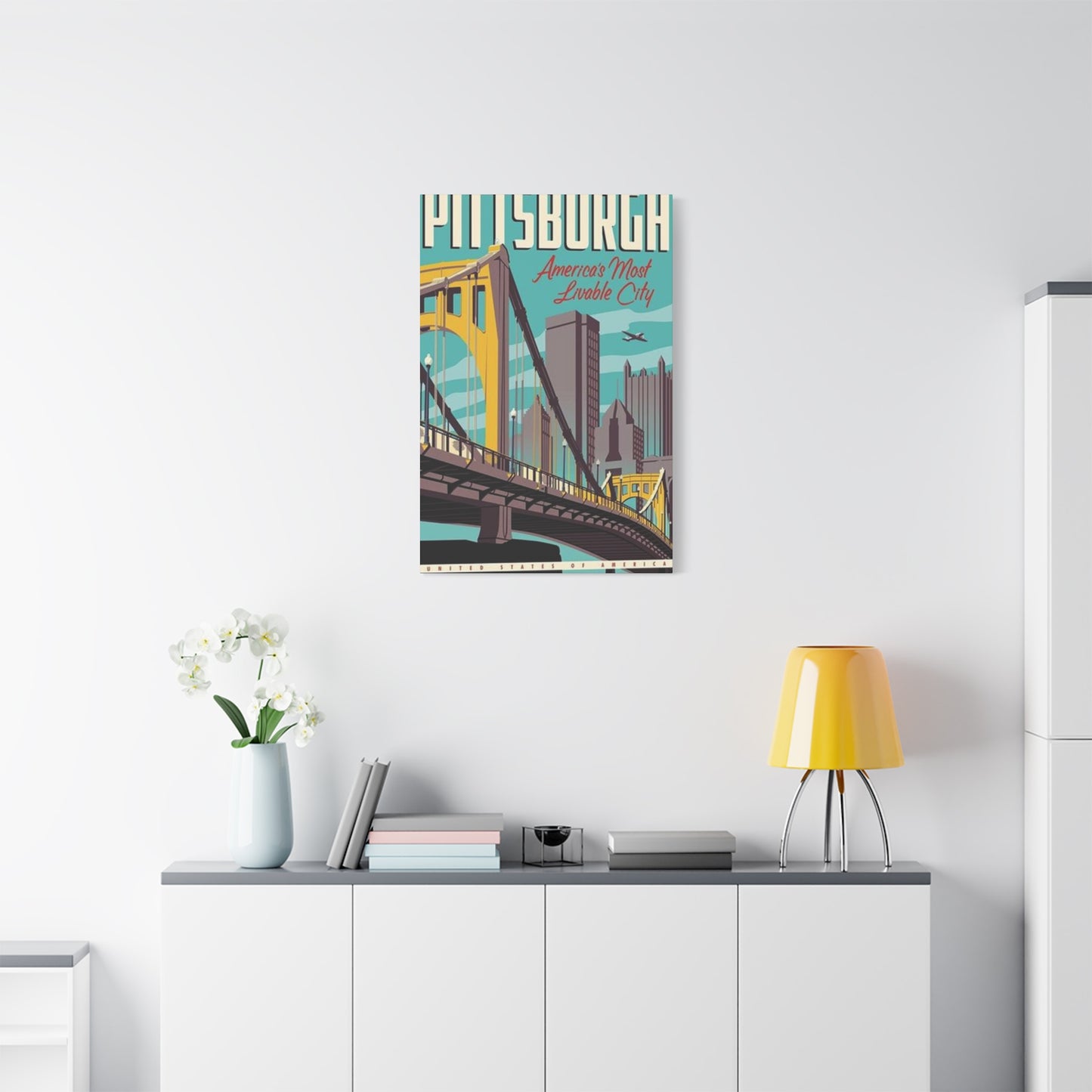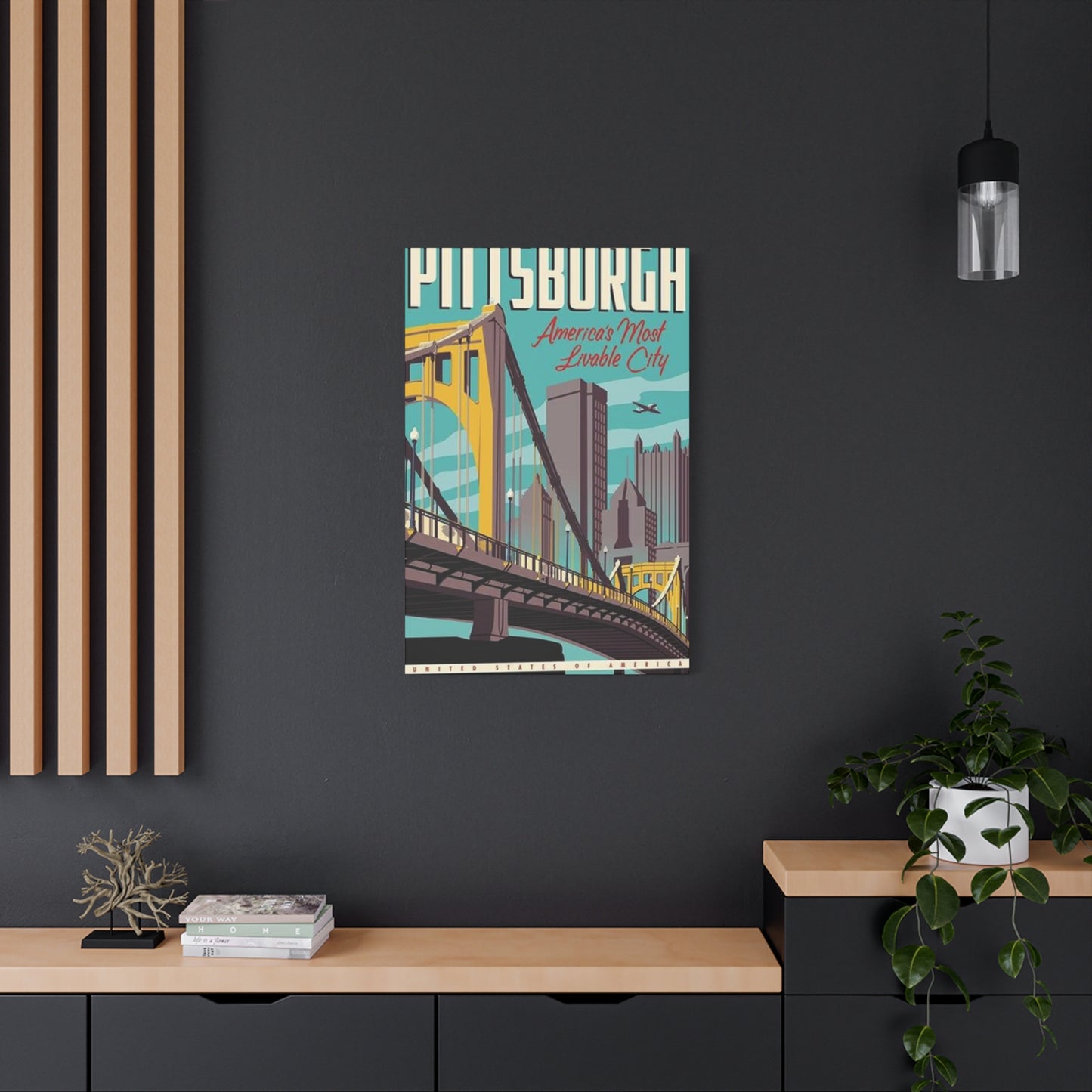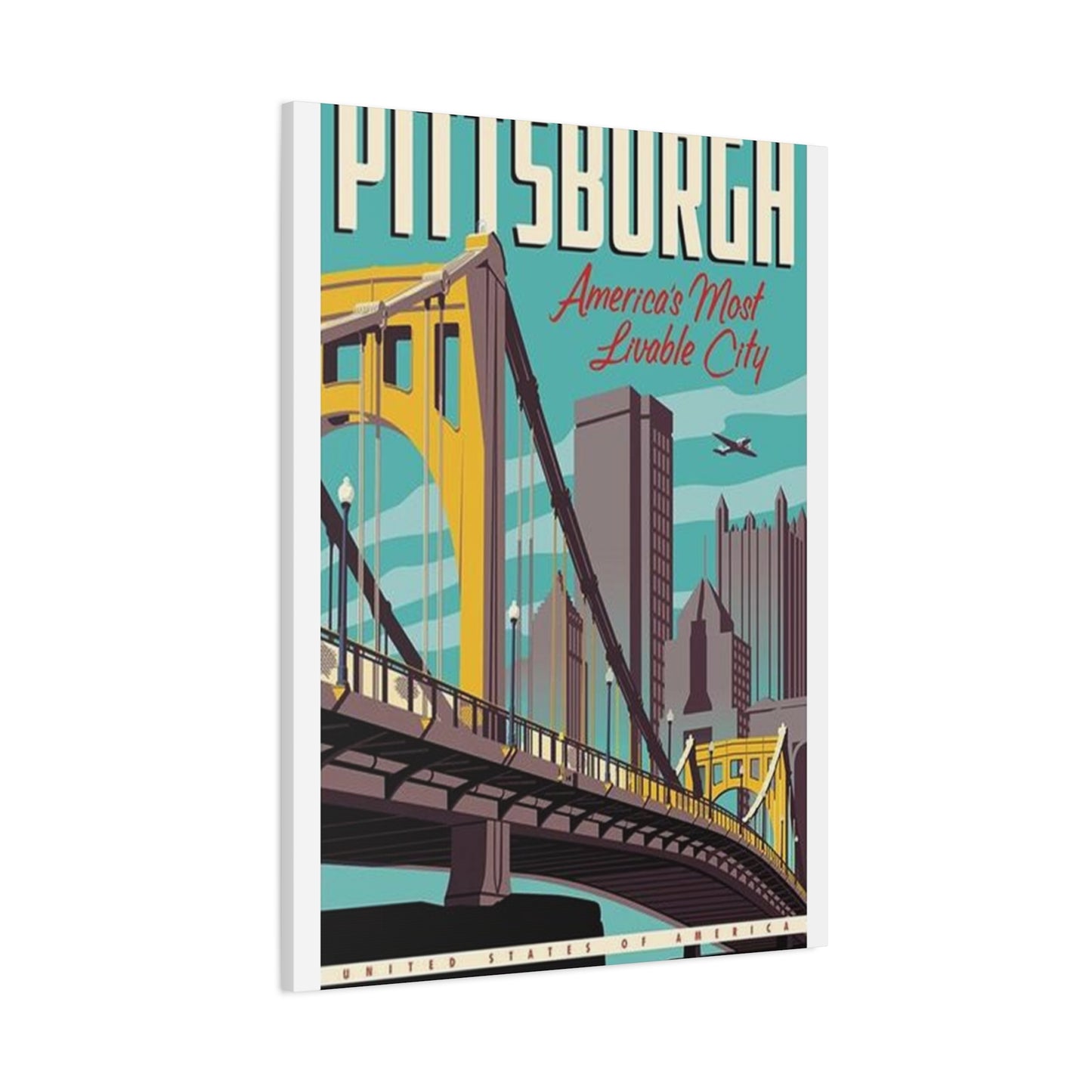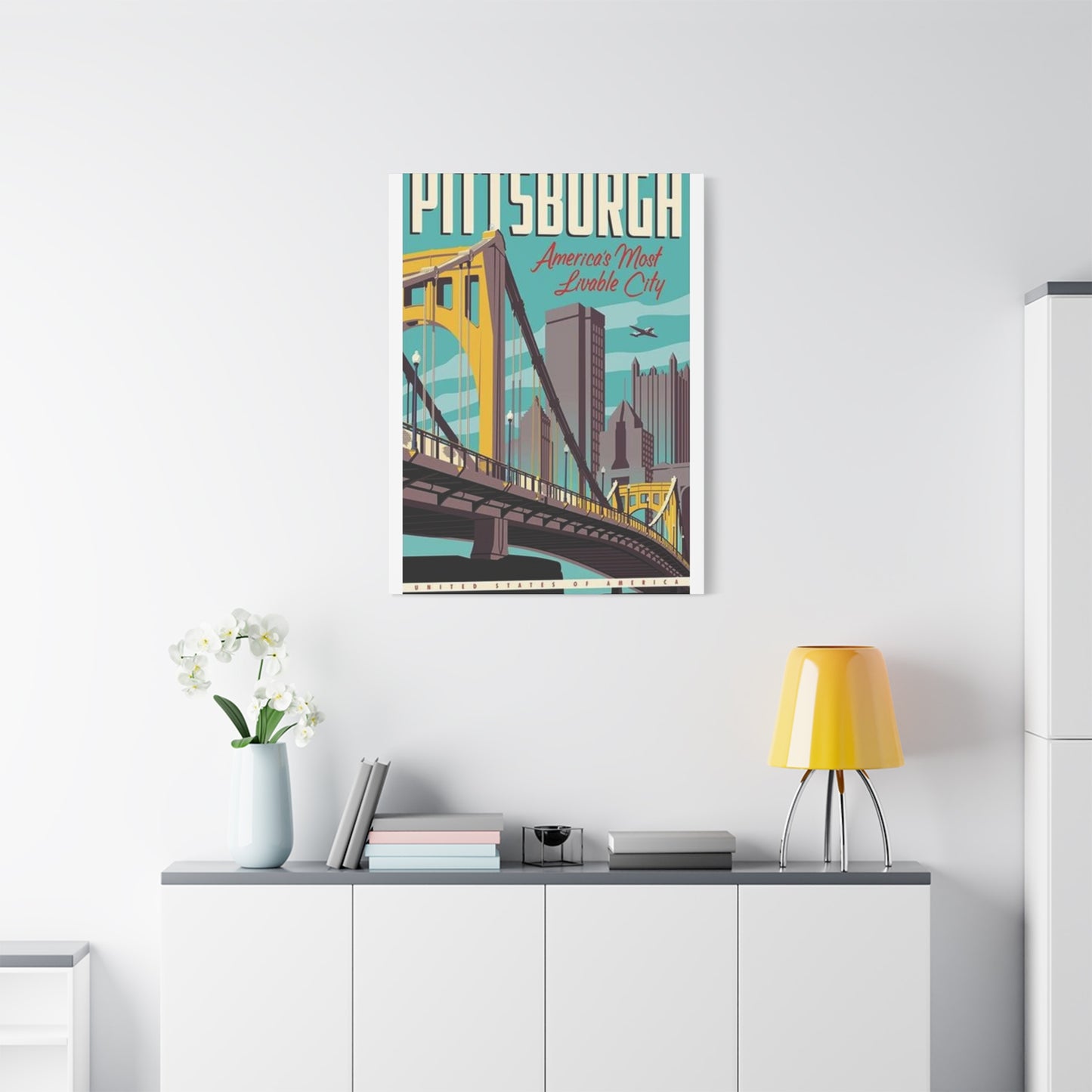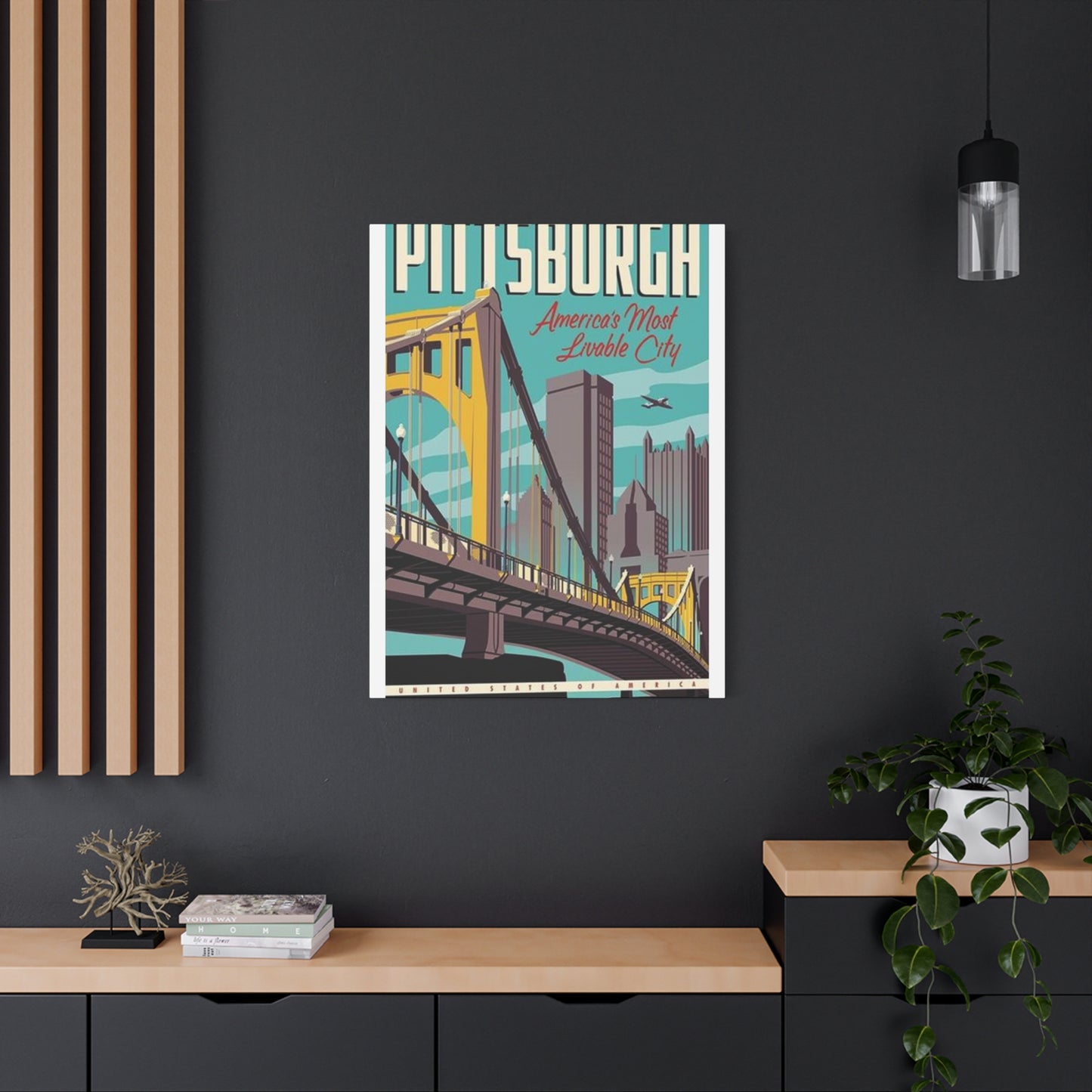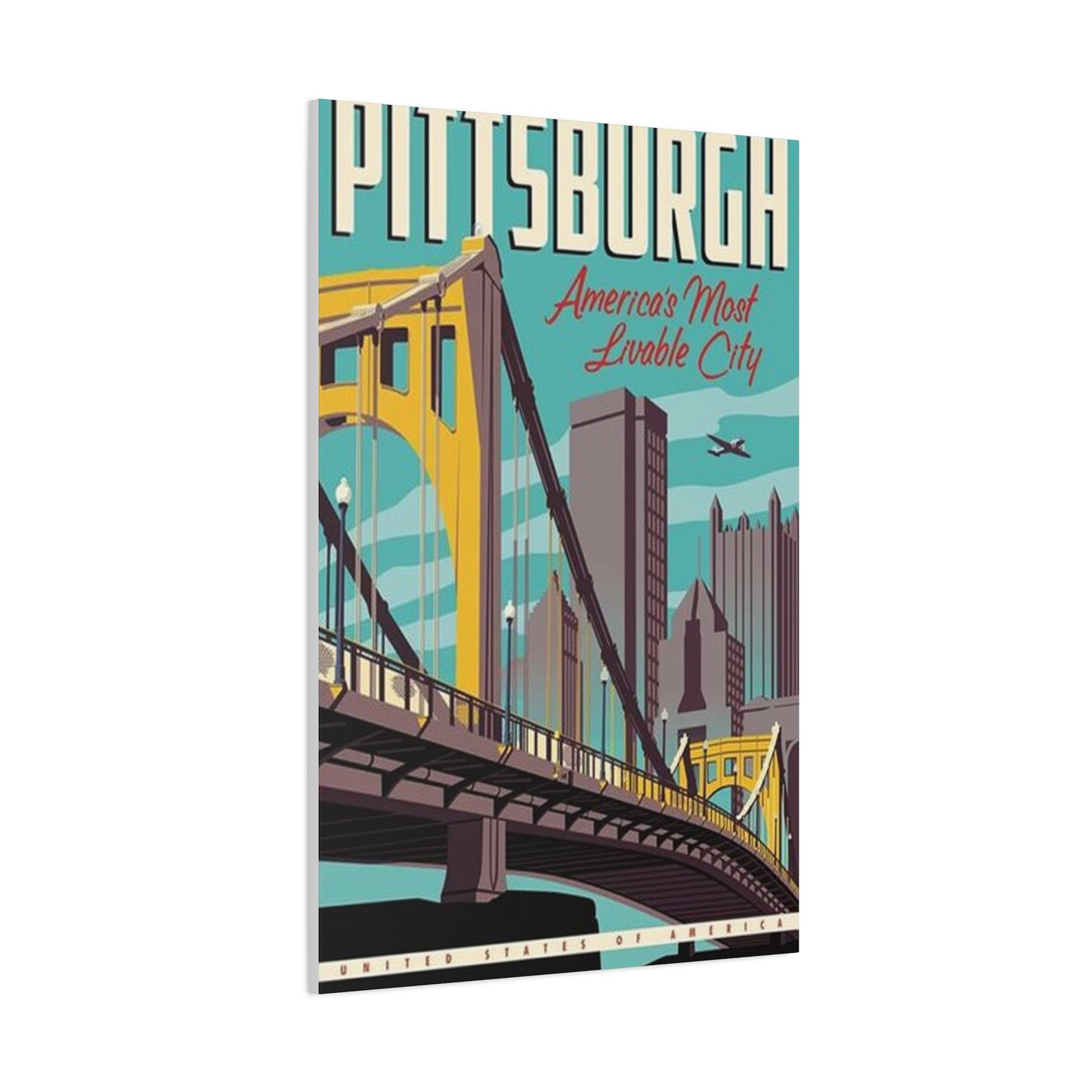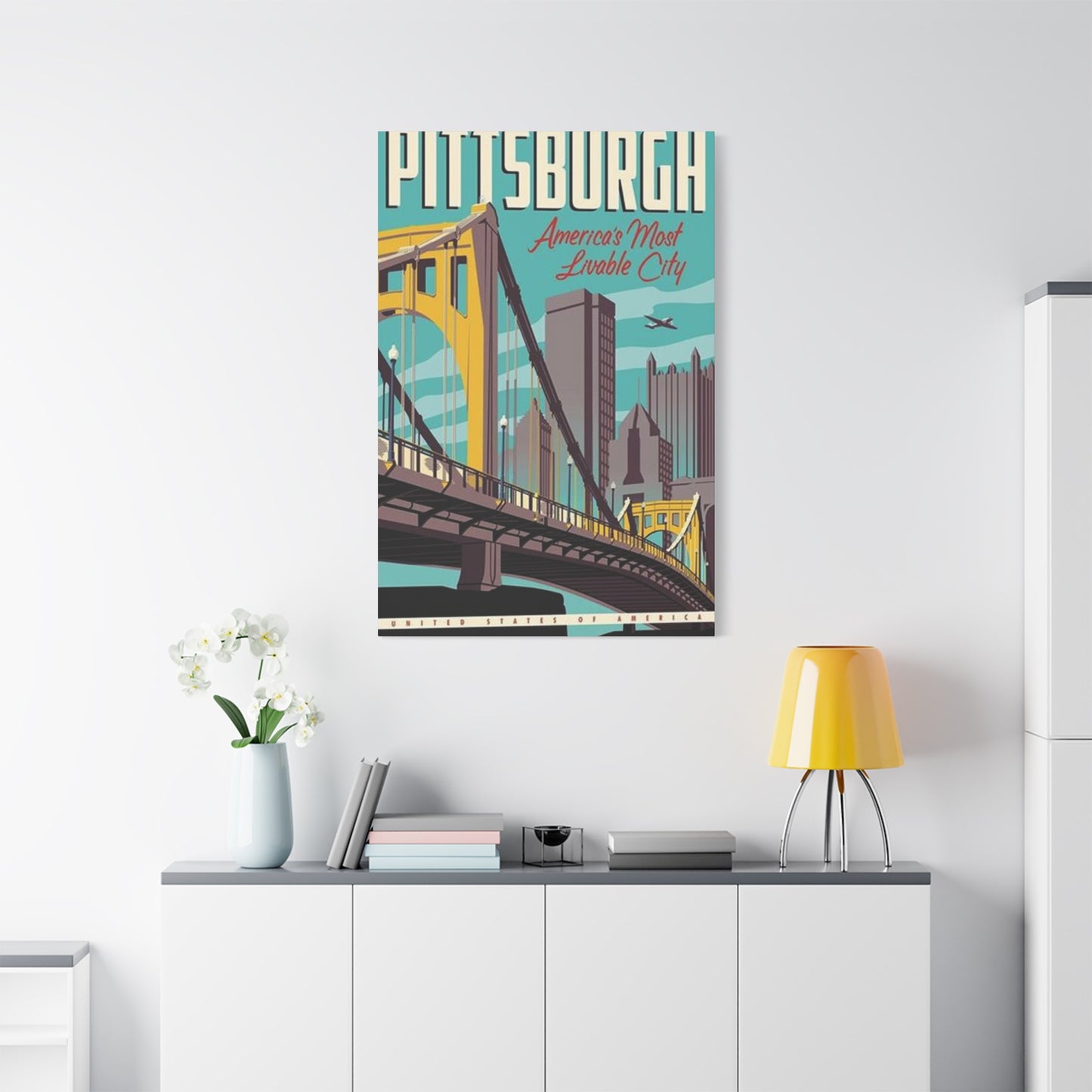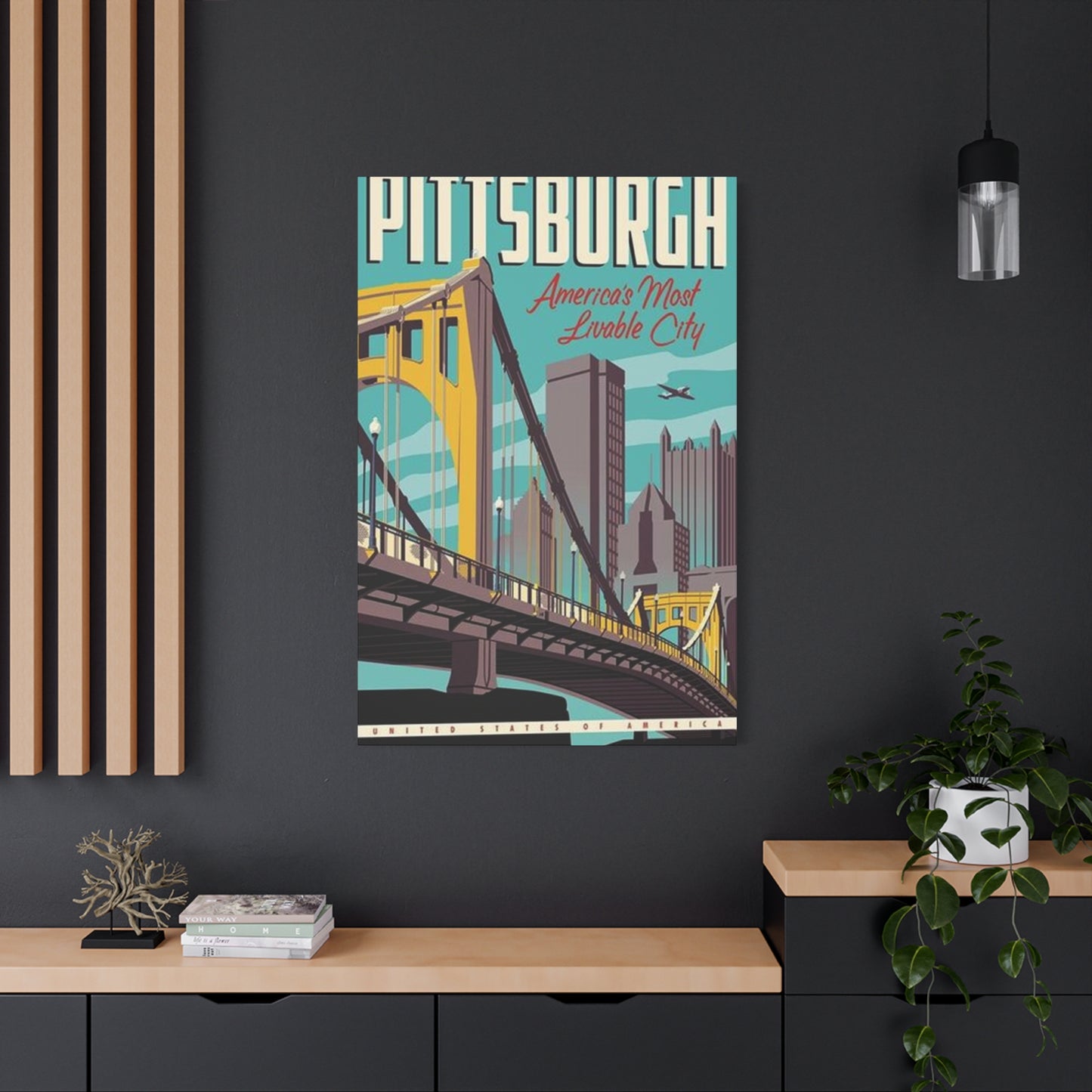Cityscape Serenity: Most Livable City of American Wall Art Prints That Inspire Calm and Comfort
The connection between people and the places they call home runs deeper than simple geography. Cities shape our identities, influence our daily experiences, and become woven into the fabric of who we are. This profound relationship has sparked a growing movement in home decoration where individuals choose to celebrate their urban environments through carefully curated wall art. Canvas prints featuring metropolitan landscapes have emerged as a powerful way to honor these connections while simultaneously elevating interior spaces with sophisticated visual appeal.
Urban artwork serves multiple purposes beyond mere decoration. It acts as a personal statement, a conversation starter, and a daily reminder of the places that hold meaning in our lives. Whether showcasing the skyline of a current residence, commemorating a beloved hometown, or highlighting a destination that captured someone's heart, these artistic pieces transform blank walls into meaningful expressions of personal history and aesthetic preference.
Leading American Metropolitan Areas for Wall Art
America's diverse urban landscape offers countless options for captivating wall art subjects. Each metropolitan area carries its own architectural signature, distinctive skyline, and unique character that translates beautifully onto canvas. The selection of cities featured in wall art collections reflects both their visual appeal and the emotional connections people maintain with these locations.
New York City stands as an iconic subject with its instantly recognizable silhouette dominated by towering skyscrapers and historic bridges. The density and vertical nature of Manhattan create dramatic compositions that work exceptionally well in various interior settings. From the Empire State Building to the Freedom Tower, these architectural marvels provide endless artistic possibilities that resonate with both residents and admirers of the metropolis.
Los Angeles represents another compelling choice with its sprawling layout and distinctive California aesthetic. The Hollywood Hills backdrop, palm tree lined boulevards, and coastal proximity give this western metropolis a unique visual identity. Art featuring this location captures not just buildings but an entire lifestyle and cultural phenomenon that attracts interest from across the nation and beyond.
Chicago's architecture earned worldwide recognition for good reason. The city's skyline showcases remarkable diversity in building styles, from historic structures to cutting edge modern designs. The lakefront setting adds natural beauty to urban elements, creating compositions that balance human achievement with natural splendor. Canvas prints featuring this Midwestern hub appeal to architecture enthusiasts and those who appreciate well planned urban environments.
San Francisco offers perhaps the most photographed and artistically rendered cityscape in America. The Golden Gate Bridge alone serves as an iconic symbol recognized globally, while the city's hilly terrain and Victorian architecture provide additional visual interest. Fog rolling through the bay creates atmospheric conditions that artists love to capture, resulting in pieces that evoke mood and emotion alongside geographic specificity.
Boston brings historical significance and colonial charm to urban wall art. The blend of old and new architecture tells America's story through buildings and streets that witnessed pivotal moments in national history. Red brick structures, church steeples, and waterfront views combine to create compositions rich with character and heritage that appeal to history buffs and design enthusiasts alike.
Washington stands apart as the nation's capital with its monuments, memorials, and government buildings creating a skyline unlike any other American city. The deliberate urban planning and architectural restrictions result in a horizontal rather than vertical cityscape that offers distinctive artistic possibilities. These prints often evoke patriotic sentiment alongside aesthetic appreciation.
Philadelphia combines historical importance with contemporary urban energy. Independence Hall and the Liberty Bell area provide heritage focused subjects while modern developments showcase the city's ongoing evolution. The layout along the Delaware River adds natural elements to urban scenes, creating balanced compositions that work well in various decorating schemes.
Nashville has surged in popularity both as a destination and as wall art subject matter. Known primarily for music, the city also boasts an increasingly impressive skyline with distinctive buildings like the Batman Building creating memorable silhouettes. The blend of Southern charm and modern development appeals to a broad audience seeking something beyond coastal metropolises.
Portland represents the Pacific Northwest aesthetic with its focus on sustainability, creativity, and natural beauty integrated into urban settings. Mount Hood visible in the distance provides a dramatic backdrop to city scenes. The quirky, independent character of this location translates into artwork that appeals to those seeking alternatives to more traditional metropolitan subjects.
Denver's dramatic setting against the Rocky Mountains creates some of the most visually striking urban landscapes available for wall art. The juxtaposition of modern skyscrapers against snow capped peaks delivers impact that few other American cities can match. This combination of urban achievement and natural grandeur results in pieces that serve as both city celebration and mountain appreciation.
The Rising Popularity of Metropolitan Canvas Artwork
Several converging trends have propelled city themed canvas prints into mainstream interior design consciousness. Understanding these factors helps explain why more people are choosing urban landscapes to decorate their living and working spaces rather than traditional artwork subjects like still life paintings or abstract compositions.
Social media platforms have dramatically influenced home decoration trends by making it easier than ever to share interior spaces and discover new design ideas. When people see attractive rooms featuring skyline art in their feeds, they naturally want to recreate similar aesthetics in their own homes. This visual sharing culture has accelerated the adoption of trends that might have taken years to spread through traditional channels.
The increasing mobility of modern life means people often relocate multiple times throughout their careers and lives. This transient lifestyle creates a desire to maintain connections with places that held significance during different life chapters. Wall art featuring former hometowns or cities where important events occurred helps maintain these emotional ties even after physical relocation.
Urban living has become more prevalent as population centers continue to grow and attract residents. People who choose city life often feel pride in their metropolitan identity and want their homes to reflect this aspect of their personality. Displaying artwork that celebrates their chosen environment becomes a natural extension of their lifestyle and values.
The customization trend affecting many consumer goods has reached home decoration. Mass produced generic art no longer satisfies consumers who want spaces that feel personal and unique. Canvas prints featuring specific cities allow for this personalization while still maintaining professional quality and sophisticated appearance. The ability to select exact locations, color schemes, and styles gives consumers control over their decorating choices.
Affordability plays a significant role in the trend's growth. Canvas printing technology has advanced while costs have decreased, making high quality wall art accessible to broader audiences. What once required commissioning an artist or purchasing expensive limited edition prints can now be achieved at reasonable price points without sacrificing quality or visual impact.
The shift toward minimalist and modern interior design aesthetics has created demand for clean, graphic artwork that complements rather than overwhelms spaces. City skylines rendered in simple line art or muted color palettes perfectly fit this design philosophy. The geometric nature of urban architecture naturally lends itself to the clean lines and structured compositions that characterize contemporary design.
Remote work arrangements have prompted people to invest more in their home environments since they spend significantly more time there. Home offices and living spaces now serve multiple functions, increasing the importance of creating pleasant, inspiring surroundings. Artwork that connects to meaningful places adds positive energy to spaces where people spend many hours daily.
The experience economy has influenced consumer preferences toward products that tell stories and create emotional connections. Canvas prints featuring cities where memorable experiences occurred serve as tangible reminders of trips, life events, or important periods. This storytelling aspect elevates the artwork beyond simple decoration into something with personal narrative significance.
Capturing Austin's Distinctive Character on Canvas
Austin has emerged as one of America's most dynamic and desirable cities, earning recognition for its live music scene, technological innovation, outdoor recreation, and distinctive culture. This Texas capital combines elements that make it both uniquely Texan and unlike anywhere else in the state, creating visual and cultural appeal that translates exceptionally well into wall art.
The Austin skyline has transformed dramatically in recent decades as the city experienced rapid growth and development. Modern glass towers now define the downtown area, with buildings like the Frost Bank Tower with its distinctive owl like appearance creating a memorable silhouette. These architectural additions provide contemporary subjects for artwork while the older, lower profile buildings maintain historical context and character.
Lady Bird Lake serves as a natural focal point for much Austin inspired artwork. The waterway reflects the skyline beautifully, particularly during golden hour when warm light bathes buildings and creates mirror like reflections on the water's surface. Paddleboarders, kayakers, and the Ann W. Richards Congress Avenue Bridge add human scale and activity to scenes that might otherwise feel static or impersonal.
The famous bat colony that emerges from under the Congress Avenue Bridge each evening provides a unique element that appears in some Austin themed art. This natural phenomenon has become synonymous with the city and adds whimsical character to more literal interpretations while also serving as a metaphor for Austin's embrace of the unconventional and celebration of nature within urban boundaries.
Sunset views looking west from downtown showcase the Texas Hill Country rolling into the distance beyond the city. This particular vantage point captures what makes Austin special, the integration of urban development with natural landscape. Artists and photographers favor this perspective because it tells a complete story about the location in a single image.
The "Keep Austin Weird" ethos that defines much of the city's identity can be expressed through art style choices even when depicting standard skyline views. Vibrant colors, unconventional compositions, or mixed media approaches honor the city's creative spirit while still clearly identifying the location. This flexibility allows Austin artwork to appeal to both traditional and more adventurous decorating sensibilities.
Street art and murals have become integral to Austin's visual culture, with destinations like the "I Love You So Much" wall and various East Side murals achieving iconic status. Some canvas prints incorporate these elements alongside or instead of traditional skyline views, offering alternatives for those who want Austin representation that emphasizes street level culture over downtown architecture.
The music scene, while difficult to depict literally in cityscape art, influences the energy and vibe that artists try to capture. Some pieces incorporate musical elements or references to famous venues like the Moody Theater, home of Austin City Limits. Others simply try to capture the vibrant, creative energy that makes Austin the Live Music Capital of the World through color choices and compositional energy.
Zilker Park and Barton Springs Pool represent the outdoor lifestyle central to Austin's appeal. While not traditional cityscape subjects, these locations appear in wider framing or stylized representations that connect the city to its recreational opportunities. This inclusion acknowledges that Austin's identity extends beyond buildings to encompass lifestyle and natural amenities.
The University of Texas campus with its distinctive tower adds educational and historical dimensions to Austin's visual identity. The burnt orange color associated with the university appears as accent color in some artistic interpretations, creating additional connection for alumni and fans while adding warmth to color palettes.
Different neighborhoods offer varied aesthetic possibilities. South Congress with its eclectic retail character, East Austin with its rapidly evolving urban landscape, or West Lake Hills with its panoramic city views each provide distinct perspectives on the metropolitan area. This diversity means Austin lovers can find artwork that resonates with their specific experience of the city rather than settling for generic downtown views.
Daily Inspiration Through Metropolitan Landscapes
The artwork surrounding us in daily life exerts more influence on mood, mindset, and motivation than many people realize. Environmental psychology research demonstrates that visual stimuli in our immediate surroundings affect everything from stress levels to creative thinking. Choosing inspirational imagery for walls where we spend significant time becomes more than decoration, it becomes a tool for enhancing daily experience and mental wellbeing.
Urban landscapes inspire through their representation of human achievement and possibility. Skylines showcase what people working together can build and create. For individuals pursuing ambitious goals, these visual reminders of collective accomplishment can reinforce their own aspirations. The vertical thrust of skyscrapers literally points upward, a directional cue that subtly influences mindset toward growth and elevation.
Morning routines gain added dimension when they include moments of connection with meaningful imagery. That first cup of coffee enjoyed while looking at artwork featuring a beloved city creates a small ritual that grounds the day. These micro moments of appreciation accumulate over time, contributing to overall life satisfaction in ways that might seem disproportionate to their brevity.
Canvas prints featuring cities where important life events occurred serve as anchors to significant memories. Looking at a San Francisco skyline might recall a career milestone achieved there, while Miami imagery could connect to a memorable vacation or relationship beginning. These memory triggers provide emotional richness to daily life that generic decoration cannot match.
For people separated from cities they love, whether through relocation or travel restrictions, wall art provides a tangible connection that helps maintain emotional bonds. This becomes particularly meaningful during challenging times when physical return isn't possible. The artwork serves as a promise of eventual return and a reminder that distance is temporary even when it feels permanent.
The changing light throughout the day interacts with canvas prints differently at various hours, creating a dynamic rather than static experience. Morning sun might illuminate a print one way, afternoon light another, and evening ambiance yet another. This variation means the artwork provides different experiences depending on when you encounter it, adding complexity to seemingly simple decoration.
Conversation guests initiate about displayed city art often leads to meaningful exchanges about travel, life experiences, and future aspirations. These discussions deepen relationships and create opportunities to share stories that might not otherwise surface. The artwork thus serves social functions beyond its aesthetic contribution, facilitating human connection through shared interest in places and experiences.
Children growing up with city imagery develop geographic awareness and curiosity about the wider world. A Chicago skyline in a playroom might spark questions about architecture, while a Seattle print could lead to discussions about different regions and climates. This subtle educational influence happens naturally through exposure rather than formal teaching.
Home offices benefit particularly from inspirational wall art since the space serves as a workplace requiring focus and motivation. A carefully chosen cityscape can provide visual breaks during intense work sessions while reinforcing professional identity and ambition. The right piece balances aesthetic appeal with motivational undertones that support rather than distract from productivity.
The symbolic meaning attached to specific cities influences their inspirational power. New York represents ambition and opportunity. San Francisco suggests innovation and progressive thinking. Nashville embodies creative pursuit. These cultural associations mean that choosing artwork of a particular city also means choosing the values and aspirations that location represents.
Rotation of artwork prevents visual stagnation, and canvas prints' relatively modest cost compared to original art makes seasonal or periodic changes feasible. Switching between different city subjects keeps the environment fresh and can align with current goals or interests. Perhaps winter calls for cozy Boston street scenes while summer suits vibrant Miami beachfront skylines.
Contemporary Interior Design with Metropolitan Elements
Modern interior design philosophy emphasizes clean lines, functional beauty, and personal expression over rigid adherence to matching sets or formal traditions. Metropolitan themed wall art aligns perfectly with these principles while adding sophistication and visual interest that elevates spaces from merely clean to genuinely compelling.
The neutral color palettes favored in contemporary design provide an ideal backdrop for city artwork. Whether the space features white walls, gray tones, or beige shades, a well selected skyline print adds focal interest without clashing. Even pieces with bold colors work because the structured, geometric nature of urban architecture maintains visual coherence with modern furniture and fixtures.
Open floor plans common in contemporary homes benefit from strategic art placement that helps define different zones without physical barriers. A large canvas print above a sofa anchors the living area, while a coordinating piece in the dining space creates connection while maintaining distinction. City themed art works particularly well for this purpose because the consistent subject matter across multiple pieces creates cohesion.
The industrial aesthetic popular in lofts and converted warehouse spaces pairs naturally with urban imagery. Exposed brick, concrete, and metal elements echo the materials visible in city architecture, creating thematic harmony between wall art and the space itself. Black and white photography of architectural details particularly complements these rougher finishes while adding refinement.
Minimalist interiors risk feeling cold or impersonal if not carefully composed. Strategic artwork introducing warmth through subject matter provides the human element that prevents sterility. A skyline at sunset with warm orange and pink tones, for example, adds necessary warmth to an otherwise monochromatic space without compromising the minimalist aesthetic.
Gallery walls have surged in popularity as a way to display multiple pieces in composed arrangements. City themed prints work beautifully in these installations, either featuring the same location from different perspectives or showcasing various cities that hold significance. The consistent subject matter creates unity while allowing variety in size, color, and specific composition.
Scandinavian design principles emphasizing simplicity, functionality, and connection to place align remarkably well with urban wall art. Simple line drawings of city skylines capture the essence of a place with minimal detail, perfectly embodying the "lagom" principle of just enough. These pieces provide interest without overwhelming spaces or contradicting the Nordic aesthetic's fundamental values.
Mid-century modern interiors benefit from the retro feel of certain city art styles. Vintage inspired prints featuring cities as they appeared in the 1950s or 1960s complement period furniture and color schemes while adding nostalgic appeal. Palm Springs, Miami, and Las Vegas particularly suit this approach given their strong associations with mid-century culture and design.
Transitional spaces between clearly modern and traditionally styled rooms challenge decorators seeking coherence throughout a home. City art works in these situations because it reads as neither strictly contemporary nor overtly traditional. A well framed skyline print can bridge stylistic gaps while maintaining sophistication across different areas of a residence.
The large scale art trend suits city subjects particularly well. Massive canvas prints measuring several feet across create dramatic impact that properly fills generous wall space in rooms with high ceilings or expansive dimensions. A six foot wide panoramic skyline commands attention and makes a bold statement while maintaining the clean, uncluttered feel modern design requires.
Monochromatic color schemes gain depth through texture and visual interest rather than color variety. Black and white or grayscale city prints contribute variation without introducing color that might disrupt carefully planned palettes. The lights and darks within the imagery add complexity that prevents monotony while respecting chromatic restraint.
Canvas Artwork Celebrating Local Pride
The relationship between people and their hometowns or adopted cities runs deeper than practical considerations of employment and housing. Cities shape identities, provide communities, and become integral to how individuals understand themselves and their place in the world. Displaying artwork that celebrates these locations makes visible this important aspect of personal identity while beautifying living spaces.
Local pride manifests differently depending on the city and individual, but universally involves affection, loyalty, and sense of ownership toward a place. Canvas prints provide a socially acceptable and aesthetically pleasing way to express these feelings without resorting to team jerseys or souvenir shop merchandise that might not suit adult home decoration sensibilities.
For lifelong residents who never left their hometown, local artwork validates their choice to stay rather than pursue opportunities elsewhere. In a mobile society that often valorizes relocation and geographic flexibility, art celebrating a chosen city affirms that remaining rooted in one place represents a valid and valuable life path worthy of recognition and pride.
Transplants and newcomers use local art to signal their adoption of a new home and integration into its community. Displaying a Chicago skyline announces that the resident now identifies as a Chicagoan even if they weren't born there. This symbolic claiming of place helps newcomers feel more connected while communicating their commitment to neighbors and guests.
The specific locations, buildings, or perspectives chosen within city art allow for nuanced expression of local knowledge and appreciation. A print featuring a lesser known neighborhood rather than the most famous downtown view signals insider status and deeper connection beyond tourist level familiarity. These choices communicate to fellow residents that the displayer truly knows and loves the city.
Local businesses increasingly stock city themed art featuring their specific location, understanding the market demand for hometown pride expression. This availability means residents can easily find high quality options without resorting to online retailers, supporting local economy while acquiring meaningful decoration. The convenience factor removes barriers to purchasing that might otherwise prevent people from acting on their desire for local art.
Seasonal variations of the same city appeal to residents who experience their hometown across all weather conditions and times of year. A summer scene with green trees and blue skies tells one story, while a winter print with snow covered buildings tells another. Both represent authentic experiences of the place, allowing residents to choose the seasonal mood they want to emphasize.
Historic photographs or vintage style renderings appeal to those interested in their city's evolution and heritage. Seeing how downtown looked decades ago creates appreciation for preservation efforts while documenting change. These pieces often spark conversations about neighborhood transformations and personal memories of how things used to be.
Neighborhood specific art has emerged as a subcategory serving residents of distinctive districts within larger cities. Brooklyn deserves its own recognition separate from Manhattan. South Side differs from North Side. These granular options allow for even more precise expression of local identity and affiliation within the broader metropolitan context.
Sports rivalries and team loyalties sometimes intersect with city pride, particularly in locations with strong team identities. While not explicitly sports themed, city art in team colors or featuring stadiums allows fans to express both civic and athletic loyalty through single pieces that work better in home decoration than overtly sports focused items might.
The gifting of local art has become a meaningful way to welcome new residents or celebrate someone's love for their city. Housewarming gifts featuring the new neighborhood, graduation presents showing a college town, or retirement gifts depicting a long time home all carry emotional weight that generic gifts cannot match. The thoughtfulness inherent in selecting something specific to the recipient's location communicates care and attention.
Expressing Affection for Your Hometown
Hometown connections represent some of the most profound geographic attachments people experience. The place where someone grew up shapes their formative experiences, provides their earliest memories, and often remains emotionally significant throughout life regardless of current residence. Displaying artwork featuring hometown landscapes allows this important relationship to maintain visible presence in daily life.
Nostalgia plays a powerful role in hometown attachment, and artwork featuring familiar scenes triggers positive memories and emotions. Seeing a skyline you grew up watching changes over years, or a landscape you associate with childhood activities, brings comfort and connection to personal history. This emotional resonance makes hometown art particularly meaningful compared to decoration featuring places without personal connection.
For people who relocated away from their birthplace, hometown art serves as an anchor to origins and identity. It reminds them where they came from even as they build new lives elsewhere. This becomes especially important for those who moved far away or cannot visit frequently. The artwork maintains the relationship despite physical distance.
Sharing hometown pride with family members creates connection across generations. Parents displaying their hometown skyline pass down geographic identity to children born elsewhere. Grandparents giving hometown art to relocated grandchildren share their history and roots with descendants who might never have lived in that place but still carry its heritage.
The contrast between hometown size and current residence sometimes makes the hometown even more meaningful. Someone from a small town now living in a major city might treasure artwork showing their modest downtown area precisely because it differs so dramatically from their current environment. The print reminds them of different paces of life and values that shaped them.
Hometown art prompts storytelling when guests inquire about the displayed location. These conversations allow hosts to share their background, explain what makes their hometown special, and relive memories through verbal recounting. The artwork thus serves as conversation catalyst that deepens social interactions beyond surface level chat.
Accuracy and authenticity matter more with hometown art than generic city decoration because residents notice incorrect details or inauthentic representations. A hometown lover will spot if a print shows buildings in wrong positions or includes elements that don't belong. This demand for accuracy ensures higher quality in hometown specific pieces.
Seasonal hometown scenes resonate differently than seasonal art of unfamiliar places. You don't just see a fall landscape; you see YOUR hometown in fall, with specific memories of autumn activities, weather patterns, and personal experiences attached to that combination. This layered meaning elevates the artwork beyond its visual qualities.
Changes to hometowns over time can be bittersweet, and artwork preserves versions of places as residents remember them. If a beloved building was demolished or a skyline dramatically altered, art showing the earlier version maintains connection to the hometown as it existed during formative years. This preservation function adds emotional and sometimes historical value.
Proud display of modest or lesser known hometowns makes a statement about values and identity separate from status signaling. Hanging a print of a small town main street or a minor city skyline announces that the displayer values authenticity and personal connection over impressing guests with prestigious locations. This authenticity itself impresses in ways that conventional status symbols cannot.
Thoughtful Present Ideas with Metropolitan Wall Art
Gift giving challenges increase with recipient age and life stage, as most adults have purchased what they need and aren't always forthcoming about their wants. Canvas prints featuring meaningful cities solve this problem by combining practical home decoration with emotional significance, making them appropriate for various occasions and relationships.
Housewarming presents should combine utility with thoughtfulness, and city art fits perfectly. Researching which city the new homeowner loves, whether their current location, hometown, or a place with special meaning, shows attention and care. The gift is both immediately useful for decorating new space and emotionally meaningful, qualities that distinguish it from generic housewarming offerings.
Wedding gifts traditionally help newlyweds establish their household, and canvas artwork featuring the city where they met, got engaged, or married creates lasting remembrance of their story's beginning. This personalization makes the gift unique to the couple rather than something any pair of newlyweds might receive. The artwork will prompt memories of their courtship whenever they see it.
Graduation presents often acknowledge achievement while launching recipients into new life chapters. Art featuring the college town where someone earned their degree honors that accomplishment while giving them decoration for their first apartment or job relocation destination. This type of gift acknowledges both the completion of one phase and the beginning of another.
Anniversary gifts increase in challenge with passing years as couples accumulate possessions and standard gift suggestions become repetitive. Canvas art depicting the city where anniversaries were celebrated or places visited together during marriage provides fresh options while demonstrating thoughtfulness about the couple's shared history. The romantic associations make it particularly appropriate for this occasion.
Retirement gifts should honor career completion while supporting the next life phase. Artwork showing the city where someone spent their professional years acknowledges that chapter while decorating the home where they'll spend increased time. If they're relocating for retirement, art featuring their long time work city helps them maintain connection after departure.
Host or hostess gifts elevate beyond wine or flowers when they demonstrate knowledge of the recipient's interests and tastes. If you know your host loves their city or has fondness for a particular place, arriving with related artwork makes a memorable impression that shows you paid attention to who they are beyond your social connection.
Birthday presents for hard to shop for individuals become easier when you identify their geographic attachments. Most people have some city, region, or location they love, and art featuring that place will resonate even with people who claim they don't want or need anything. The gift's personal nature makes it difficult to dismiss.
Care packages and gifts for people going through difficult times often aim to provide comfort and brightening. Artwork featuring a loved one's happy place, whether a vacation destination or hometown, offers visual escape and positive association during challenging periods. The gift says "I know what makes you happy" in tangible form.
Corporate gifts and client appreciation items often default to generic luxury goods or branded merchandise. Companies that do business in specific cities can distinguish themselves by giving artwork featuring that location to clients, employees, or partners there. This shows local engagement and personalization while providing practical value.
Teacher appreciation gifts from students or parents should acknowledge educators as individuals beyond their professional role. Art featuring a teacher's hometown, favorite vacation spot, or the city where they teach shows recognition of their personal identity and connection to place. This personal touch means more than generic "teacher gifts."
Honoring Livable Cities Through Visual Art
City rankings evaluating quality of life, sustainability, culture, and economic opportunity shape public perception and resident pride. When a city ranks highly for livability, residents feel validated in their choice to live there and often want to celebrate their community's achievements. Wall art featuring these recognized cities allows proud residents to showcase their home's positive reputation.
The criteria used to evaluate livable cities generally include factors like environmental quality, infrastructure, healthcare, education, culture, and economic stability. Cities excelling in these areas attract residents seeking high quality lifestyles, and these residents in turn seek ways to express appreciation for what their city offers. Displaying artwork becomes one method of acknowledging and celebrating livable community characteristics.
Portland frequently appears on livability rankings due to its emphasis on sustainability, outdoor access, and quality of life priorities. Residents of highly ranked cities often feel defensive when their chosen home receives criticism, and art displaying the cityscape provides visible evidence of their pride and loyalty. The artwork makes a statement about values alignment with the city's priorities.
Environmental consciousness increasingly influences city evaluations, with recognition going to locations implementing green building standards, public transit, and sustainability initiatives. Residents who chose cities partially based on environmental values often want their home decoration to reflect these priorities. Choosing canvas prints, which can be produced sustainably, of cities known for environmental leadership creates consistency between values and possessions.
Cultural amenities like museums, performing arts, restaurants, and festivals contribute to livability rankings and resident satisfaction. Art featuring cities with rich cultural scenes celebrates not just buildings but the vibrant community life those buildings contain. The skyline represents theaters, galleries, music venues, and gathering spaces that make the city worth celebrating.
Walkability and human scale urban design appear frequently in livability criteria. Cities that prioritize pedestrians over cars, maintain human scaled neighborhoods, and create pleasant street level experiences earn praise from urban planners and appreciation from residents. Artwork capturing street scenes or neighborhood views rather than just distant skylines can emphasize these livability factors.
Economic opportunity and stability affect livability rankings, as cities with diverse economies, employment options, and reasonable cost of living score well. Young professionals particularly seek these conditions, and canvas art featuring cities where they've built careers becomes linked with professional identity and success. The artwork symbolizes not just liking a place but thriving there.
Safety and community feel contribute enormously to livability, even if these factors don't always translate into visual elements easily captured in skyline art. However, the overall composition and atmosphere of city prints can convey these qualities through lighting, perspective, and inclusion of people going about daily life. These subtle cues communicate more than just geographic identification.
Educational institutions elevate livability rankings when cities contain quality universities and schools. College towns often develop distinctive characters shaped by educational institutions, and artwork featuring these cities appeals to students, alumni, faculty, and residents who value education's presence in their community. The university becomes inseparable from city identity.
Healthcare quality affects rankings significantly though it's rarely visible in cityscape art. However, cities known for medical excellence like Boston or Rochester often appear in art collections, and residents working in healthcare or choosing locations partially for medical facilities feel pride in these aspects of their city even if they're not visually represented.
Work life balance, though intangible, influences livability significantly. Cities where this balance is culturally valued and supported through policy and infrastructure earn resident loyalty. Displaying art of such cities expresses appreciation not just for physical place but for lifestyle it enables. The print represents values and daily experiences as much as geography.
Wall Art Reflecting Your Metropolitan Lifestyle
Personal identity increasingly connects with chosen lifestyle rather than solely profession, family role, or demographics. For urban dwellers, city living represents a core identity component that influences everything from daily routines to long term priorities. Wall art featuring metropolitan scenes allows this lifestyle identity to find visual expression throughout living spaces.
The decision to live in a city rather than suburbs or rural areas reflects specific values and preferences around access, density, culture, and convenience. City dwellers often embrace these aspects enthusiastically rather than merely tolerating them as career necessities. Displaying urban artwork reinforces this positive embrace of metropolitan life and announces to visitors the conscious choice behind residential location.
Apartment living necessitates different decorating approaches than houses with abundant wall space. Canvas prints work particularly well in apartments because they provide impact without requiring floor space or extensive installation. A dramatic cityscape can make a small apartment feel more sophisticated and intentional, counteracting the generic quality many rental spaces possess.
The social aspect of city living, with its emphasis on being out in community rather than isolated in private spaces, connects to urban art's celebration of public skylines and shared civic identity. The artwork acknowledges that city life happens in restaurants, parks, streets, and venues as much as in private residences. The prints celebrate this collective existence.
Urban professionals who chose cities to advance careers often see their residence as integral to professional identity. Displaying skyline art in home offices or living spaces reinforces the connection between place and career success. The artwork serves as daily reminder of why they made location decisions that might have involved sacrifices like higher costs or smaller living spaces.
The cultural consumption central to urban lifestyle, attending shows, visiting galleries, dining at diverse restaurants, finds reflection in city art that depicts cultural district buildings or neighborhoods known for arts scenes. The artwork symbolizes the lifestyle these buildings and districts facilitate rather than just representing architecture.
Urban sustainability efforts including public transit, bike infrastructure, and walkability appeal to environmentally conscious city dwellers. Artwork depicting cities known for these features celebrates shared values within urban communities. Residents who walk to work, bike for errands, and use transit want decoration that honors these choices rather than contradicting them with suburban or rural imagery.
Diversity and multiculturalism characterize most major cities and attract residents seeking these qualities. Urban art often captures this diversity through depictions of varied architectural styles, different neighborhoods, and visual complexity that mirrors demographic variety. The richness and complexity of the imagery parallel the richness and complexity residents appreciate in urban demographic makeup.
The energy and stimulation of city life appeals to certain personality types while overwhelming others. Those who thrive on urban energy want home environments that reflect rather than contradict this characteristic. Bold, vibrant city art channels metropolitan energy into living spaces, maintaining the exciting atmosphere residents chose by locating in cities rather than quieter alternatives.
Urban nature, found in city parks, waterfronts, and green spaces, represents important aspects of city living that prevent complete disconnection from natural world. Artwork incorporating these elements shows balanced perspective on urban life that includes rather than excludes nature. Central Park in New York art or Chicago lakefront scenes acknowledge that city living includes natural amenities alongside built environment.
The 24 hour nature of major cities with their late night dining, entertainment, and activity appeals to night owls and those who appreciate never sleeping atmospheres. Nighttime cityscape art with lit buildings and twilight skies captures this aspect of urban life, celebrating the always available nature of metropolitan environments.
Simplified Metropolitan Prints for Every Space
Minimalist design principles emphasizing simplicity, clean lines, and careful editing have influenced contemporary aesthetics across multiple domains including wall art. City themed prints adapted to minimalist sensibilities maintain geographic specificity and recognizability while stripping away excess detail to create clean, modern pieces suitable for understated interiors.
Line art skylines reduce cities to their essential silhouettes using simple black lines on white backgrounds or vice versa. This extreme simplification captures iconic building shapes and overall city profiles while eliminating distracting details. The result reads immediately as representing a specific location while maintaining the visual quietness minimalist spaces require.
Monochromatic color schemes in city prints restrict palettes to single hues with tonal variations, creating cohesion and calm. A blue toned Seattle print or sepia toned Chicago piece provides enough variation to create depth and interest while avoiding the visual complexity that color variety introduces. These pieces add to spaces without overwhelming them.
Negative space becomes a design element in minimalist city art rather than merely background. Compositions might position small skylines at canvas bottoms with expansive skies occupying most of the space, or place silhouettes at edges rather than centers. This generous use of emptiness aligns with minimalist values while creating contemporary, gallery worthy aesthetics.
Abstract interpretations of cityscapes use color blocks, geometric shapes, or simplified forms to suggest rather than depict locations. These pieces require either titles or existing familiarity with the city to identify the subject, making them accessible to those who know while remaining mysterious to others. The abstraction level allows the art to function decoratively even without geographic recognition.
Neutral color palettes featuring whites, grays, blacks, and beiges suit minimalist interiors and allow city art to integrate seamlessly without demanding attention through color. These palette choices let architectural forms and composition provide visual interest while color remains subordinate. The neutrality ensures the piece won't clash with existing decoration or limit future design changes.
Single building focus rather than entire skylines creates minimalist city art that zeroes in on one iconic structure. A print featuring only the Space Needle, Golden Gate Bridge, or Willis Tower provides geographic specificity through singular recognition without the complexity multiple buildings introduce. This focus embodies minimalist reduction to essential elements.
Typography based city art lists neighborhood names, street names, or city nicknames in clean fonts on simple backgrounds. These pieces communicate location through text rather than imagery, offering alternatives to literal representation. The approach suits word oriented individuals while maintaining minimalist aesthetics through clean fonts and ample spacing.
Conclusion
In a world that moves at lightning speed, finding serenity amid the energy of urban life is both an art and a necessity. Cityscape wall art that captures America’s most livable cities—whether it’s the charm of Seattle, the sophistication of San Francisco, the rhythm of Chicago, or the tranquility of Austin—offers a beautiful way to bring calm, balance, and inspiration into your living space. These prints are more than representations of skylines; they are windows into the essence of urban comfort—a reflection of cities designed not just to thrive but to live beautifully within.
When you decorate with American cityscape wall art, you’re not merely adding images of buildings or bridges to your walls—you’re creating a visual experience that connects emotion and design. The art captures the gentle glow of sunrise over quiet streets, the shimmer of night lights reflected on the water, and the harmony between nature and architecture that defines America’s most livable places. Whether presented in crisp monochrome or soft, atmospheric color palettes, these artworks radiate peace and purpose, offering a sophisticated yet comforting presence in any room.
Each piece of cityscape art tells a different story. A skyline at dusk might whisper of ambition and possibility, while a misty morning over a waterfront city might evoke calm and reflection. The beauty of these scenes lies in their balance—the perfect coexistence of energy and stillness. They remind us that cities, though filled with motion and light, also hold quiet corners, serene parks, and peaceful perspectives that restore the soul. Bringing these moments into your home allows you to experience the best of both worlds: the structure and inspiration of urban life, and the calm that comes from connection to beauty and design.
Interior design is about emotion as much as aesthetics, and cityscape wall art captures that relationship perfectly. In a living room, a panoramic view of a skyline becomes a focal point that adds depth and sophistication. In bedrooms, softer tones of city lights under twilight create a soothing environment ideal for rest and reflection. In offices or creative studios, urban art encourages focus and determination—subtly reminding you of growth, ambition, and the creative pulse of city life. Whether you choose a piece that highlights architectural detail or one that immerses you in atmosphere, the effect is transformative: your walls become windows into harmony and motion.
Monochrome cityscape prints, in particular, embody modern minimalism and elegance. They draw attention to structure and shadow, enhancing the architectural beauty of the city while maintaining a calm, balanced aesthetic. For homes with contemporary or industrial décor, these pieces add a layer of refinement, grounding the space in urban sophistication. In contrast, color cityscape prints—featuring warm sunsets, reflections, or skyline silhouettes—bring emotional warmth and natural contrast, making them perfect for spaces that seek to feel welcoming and alive. Both styles hold universal appeal, ensuring your décor remains timeless and inspiring.
Lighting can elevate these artworks even further. Placing cityscape prints near large windows allows natural light to play across their surfaces throughout the day, changing their mood with every passing hour. In the evening, soft accent lighting enhances the glow of city lights, giving your room a serene, cinematic feel. Paired with minimalist frames or floating canvases, cityscape wall art achieves a balance between modern design and emotional storytelling—a harmony that reflects the very cities it depicts.

















